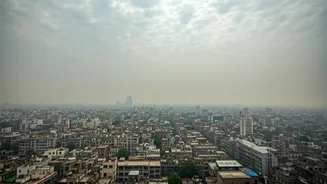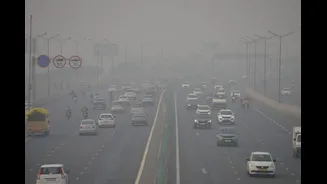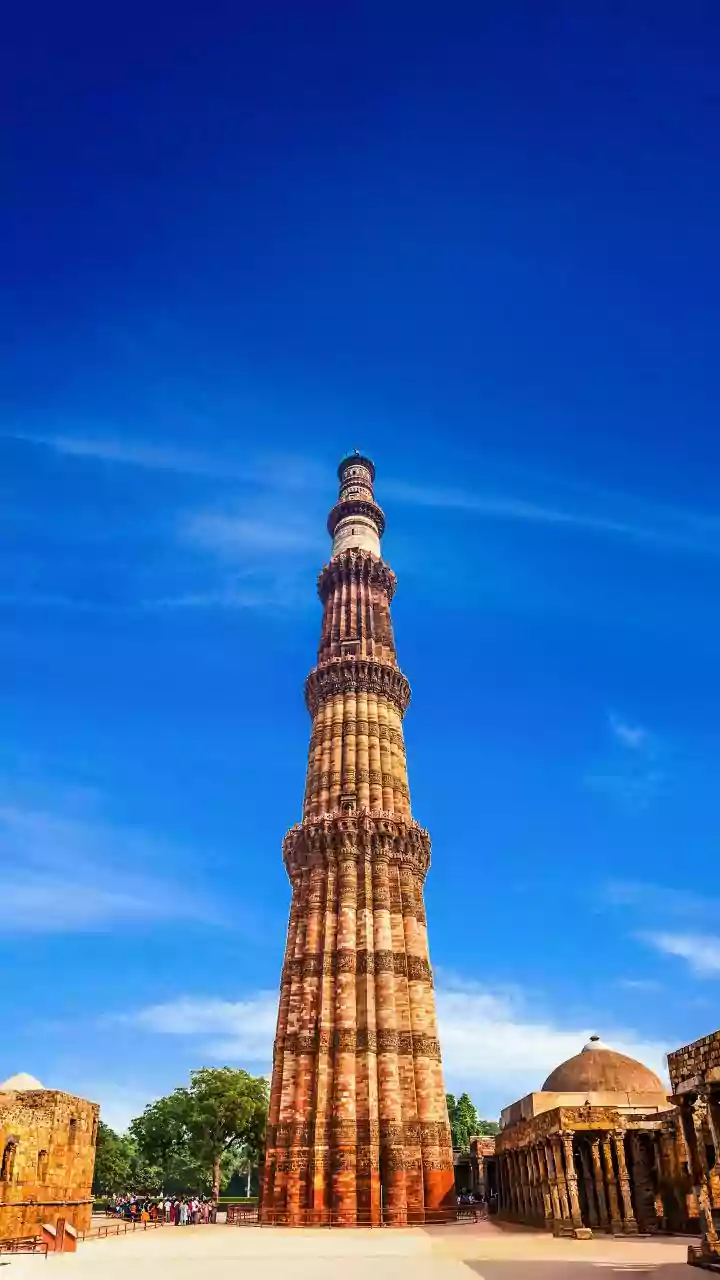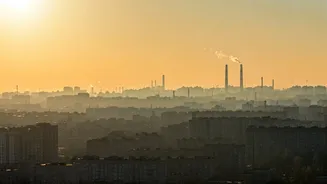Understanding Air Quality
The Air Quality Index, or AQI, serves as a vital tool for evaluating the state of the air, representing how clean or polluted it is. It is a system that
transforms complex air pollution data into a single, easily understandable number. The AQI assesses various pollutants, offering a unified score that helps individuals and authorities gauge the level of air pollution in a specific location. This enables informed decisions about activities and actions that can be taken to mitigate exposure to harmful pollutants. This includes the assessment of harmful pollutants, such as particulate matter (PM2.5 and PM10), ozone (O3), nitrogen dioxide (NO2), sulfur dioxide (SO2), carbon monoxide (CO), and ammonia (NH3). Each pollutant has its specific health effects, and the AQI takes these effects into consideration when calculating the overall index value. It is a color-coded system, often with a range from 'Good' to 'Severe' to help people understand the level of risk.
Key Pollutants Examined
Several pollutants are commonly monitored to measure air quality. PM2.5 refers to fine particulate matter that is less than 2.5 micrometers in diameter, easily penetrating the lungs and leading to respiratory issues, along with cardiovascular problems. Similarly, PM10 consists of larger particles less than 10 micrometers, contributing to similar health impacts. Ozone (O3), created through reactions between pollutants in sunlight, can harm the respiratory system and is especially dangerous for children and the elderly. Nitrogen dioxide (NO2), primarily from vehicle emissions, is another harmful gas that can inflame airways. Sulfur dioxide (SO2), often linked to industrial activities, and carbon monoxide (CO), usually originating from incomplete combustion, also pose serious health risks by affecting the respiratory system and interfering with the transport of oxygen in the blood, respectively. Ammonia (NH3), often from agricultural practices and industrial processes, is also monitored. Understanding these pollutants is critical for effective prevention and mitigation strategies, aimed at safeguarding public health.
Sources of Pollution
Various factors are responsible for the poor air quality in Delhi-NCR. Vehicle emissions, a significant contributor, release pollutants like nitrogen oxides and particulate matter, especially in densely populated areas with high traffic volumes. Industrial activities also emit pollutants such as sulfur dioxide and particulate matter. Construction sites, another source, generate dust and particulate matter, particularly when projects are underway, and these contribute significantly to air pollution. Crop residue burning, particularly in nearby states, releases large quantities of smoke and pollutants, increasing pollution levels. Meteorological conditions also play a role. During the winter months, temperature inversions trap pollutants near the ground, preventing their dispersal. This, combined with low wind speeds, exacerbates pollution levels. Consequently, it's important to consider the diverse sources and how they interact, to address and manage the problem of air quality effectively in the Delhi-NCR region.
Government Measures
The government has taken several steps to address air pollution, although the issue persists. Policies like the Graded Response Action Plan (GRAP) dictate emergency measures based on AQI levels, which can include restrictions on construction, transport, and industrial activities. Initiatives such as the promotion of electric vehicles and the implementation of stricter emission standards for vehicles aim to reduce pollution from the transport sector. Investments in public transportation, like metro systems, also provide a cleaner alternative. Promoting cleaner fuels and technologies within the industrial sector helps reduce emissions. The implementation of these measures represents an effort to improve the air quality. These initiatives show the government's intent to address the air quality problem, but success relies on effective execution and ongoing monitoring to ensure improvements in air quality and protect public health in Delhi-NCR.
Living with Poor Air
When air quality is poor, people living in Delhi-NCR need to take steps to protect their health. Monitor the AQI regularly to understand the pollution levels and take informed precautions. People may consider using air purifiers at home to filter indoor air. Wearing masks, particularly N95 respirators, can help reduce exposure to pollutants when outdoors, especially during times of elevated pollution. Reduce outdoor activities during peak pollution hours, when air quality is typically at its worst. Those with respiratory or heart conditions should take extra precautions, follow medical advice, and avoid strenuous activities in polluted air. Regular health check-ups can assist in catching early signs of health issues caused by air pollution and help you address them promptly.
Future Outlook
Even with ongoing measures, improving air quality in Delhi-NCR remains a complex challenge. The issue requires a multifaceted approach that addresses various sources of pollution. To improve air quality sustainably, coordinated efforts must be put into place. Continuous monitoring, evaluation of existing strategies, and adjusting approaches based on their effectiveness is crucial. Technology and innovation can offer new solutions. The transition to cleaner energy sources, such as solar and wind power, can reduce reliance on polluting fuels. Public awareness programs can also play a key role. By creating awareness, individuals and communities may become more conscious of their contribution to the problem, and more willing to adopt changes in their behavior to reduce pollution levels. The long-term vision for the area relies on consistent actions and comprehensive solutions to establish cleaner and healthier air.















